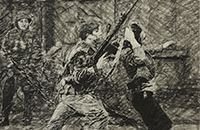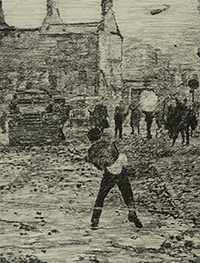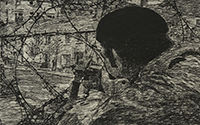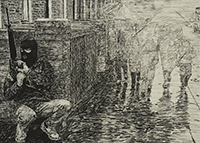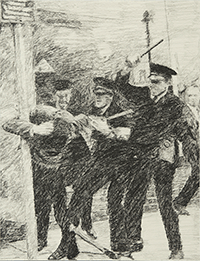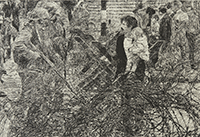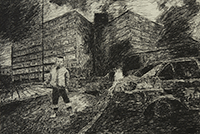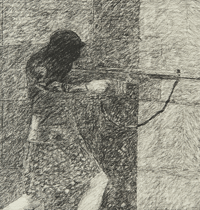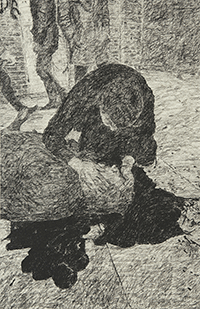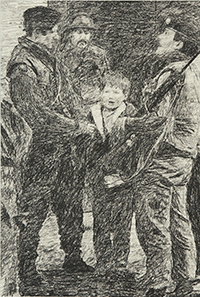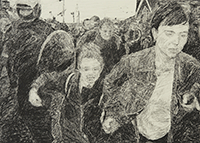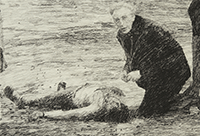Childhood Dies in Divis

Childhood Dies in Divis
The Divis Flats complex was located near an interface area between the Nationalist Falls Road area and the Unionist Shankill area of Belfast. It was constructed to be a modernist solution to post-war housing shortages. The residents of Divis Flats came primarily from impoverished working class Nationalist backgrounds. Recessions that crippled the textile and shipping industries of Northern Ireland hit Belfast hard. In addition to the unstable economy, the sectarian culture and discriminatory practices in employment placed a heavy burden on the Nationalist Falls Road area. Unemployment rates in the Falls Road area were around 68 percent. As much as 51 percent of the Divis Flats residents were completely dependent on welfare assistance to provide for the basic needs of their families.
The complex was a flashpoint area during “The Troubles”. During the riots in Belfast in 1969, the RUC fired a Browning machine gun from a Shorland armoured car into the complex. On the 14th of August 1969, nine-year-old Patrick Rooney was the first child killed in “The Troubles”. After hearing shots and seeing men shot in the legs, Neely Rooney picked his son Patrick up and carried him to another room. Neely Rooney was grazed in the forehead by a bullet while Patrick was shot through the back of the head while standing against the wall. When Patrick Rooney was brought home from the hospital, he could not be buried from Divis Flats because the Falls Road was barricaded. The Rooney family had to be escorted to Andersontown by the British Army to bury their son.
In response to the Provisional IRA and INLA activity in the Falls Road area, the British Army occupied the top two floors of Divis Tower and constructed an observation post on the roof of the building in the 1970s. As “The Troubles” progressed, British soldiers could only access their post by helicopter. In 1982 the European Union declared Divis Flats the worst housing of its kind in Europe. Between external violence on the streets of Belfast, checkpoints through the nearby interface area, and British soldiers occupying the roof of the tower, residents of Divis Flats were like prisoners. Children who grew up in Divis from the 1960 through the 1980s, when much of the complex was demolished, came of age in a prison for impoverished working class Nationalists with nowhere else to go.


